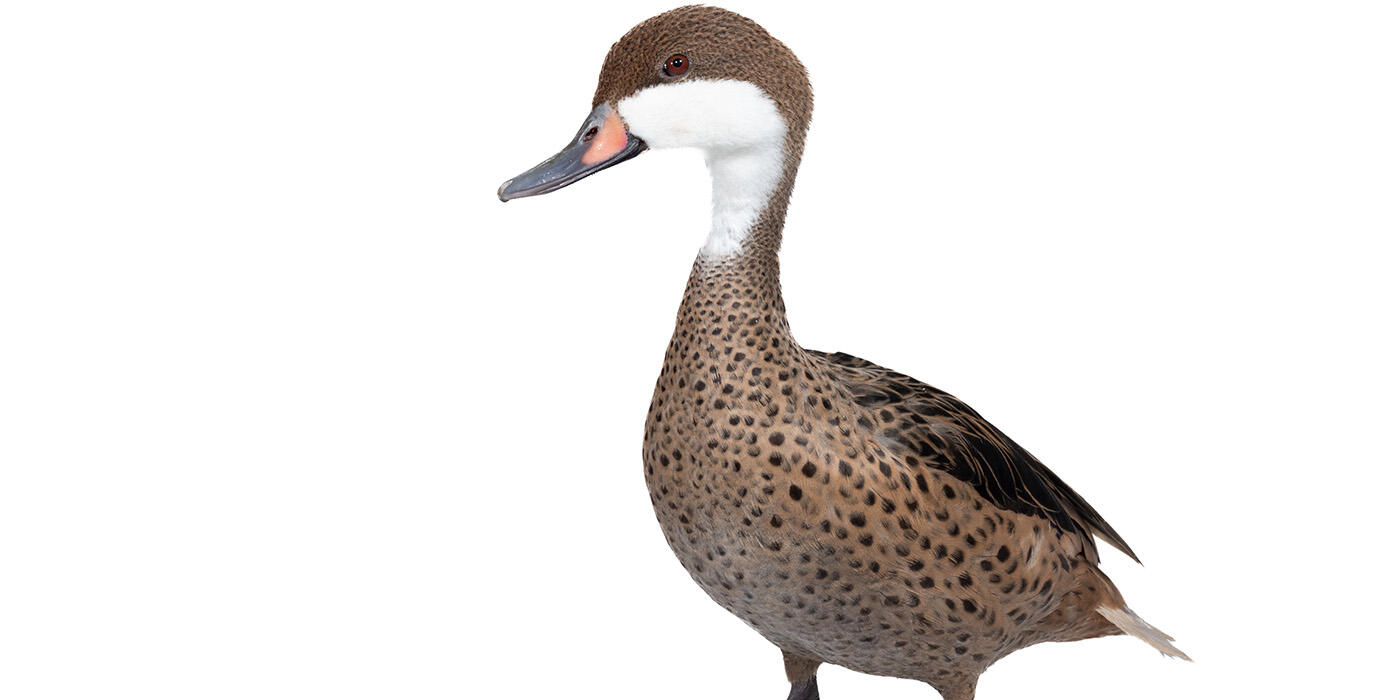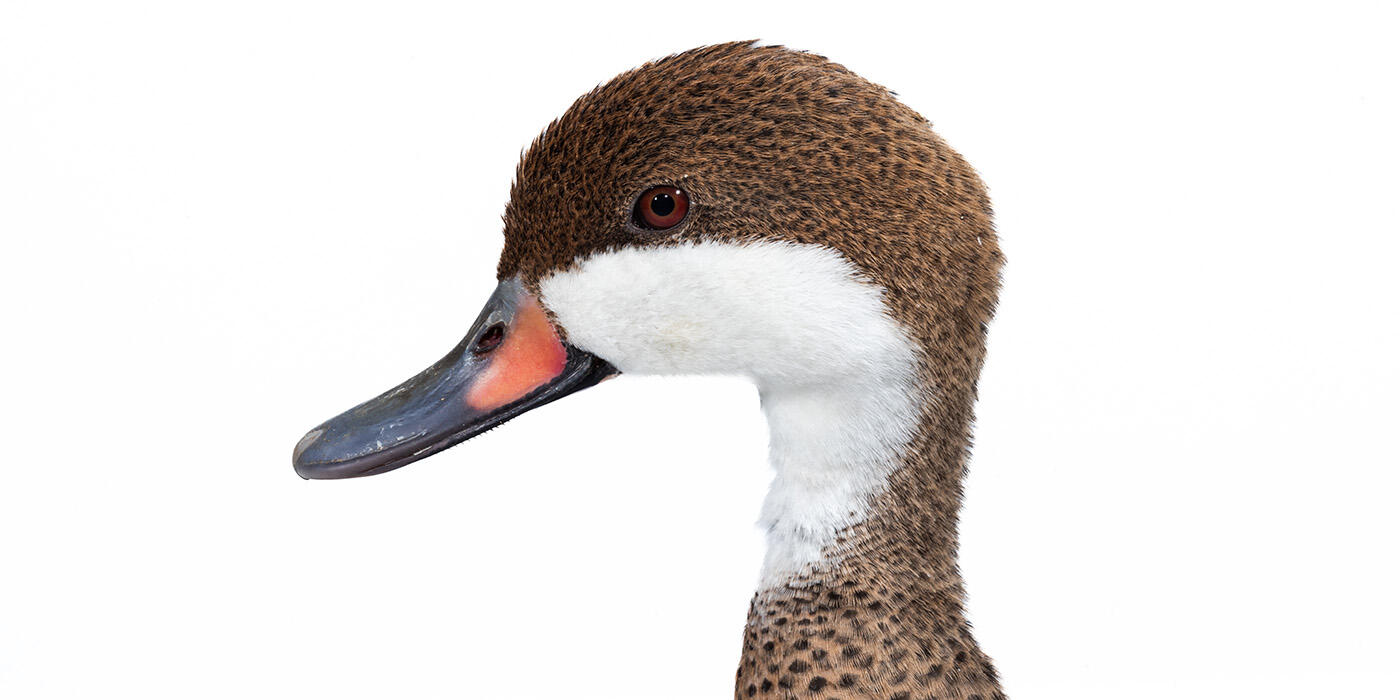Also called the Bahama pintail, the white-cheeked pintail is a medium-sized, non-migratory duck known for its striking and distinguished plumage. It lives year-round in coastal and saltwater habitats in parts of the Caribbean, South America, Florida and the Galápagos Islands.
Physical Description
White-cheeked pintails are easily identified by their white cheeks and throat, contrasted with a reddish patch at the base of a grayish-blue bill. Their bodies are light brown with dark spots on the chest and belly. When in flight or stretching, a bright green patch (called a speculum) is visible on the wings. Males and females look similar, though females are generally duller in color.
Size
These medium-sized ducks have bodies that measure between 15-20 inches (38-51 centimeters), with wingspans stretching 21 to 26 inches (55 to 68 centimeters) in length. Adults weigh between 0.87-1.5 pounds (440-650 grams). Females are slightly larger than males.
Native Habitat
They inhabit tropical and subtropical areas of the Caribbean, northern South America, the Galápagos and occasionally Florida. They are most commonly found in small flocks in saltwater environments like swamps, marshes, lagoons and mangrove forests.
Lifespan
Lifespan data in the wild is not well documented.
Communication
These ducks are relatively quiet, especially when compared to other members of the duck family. Males make a low, whistle-like call, and the females produce a simple quack. Both sexes may grunt when startled or alarmed.
Food/Eating Habits
White-cheeked pintails are dabbling ducks, meaning they forage for food at or near the water’s surface. They primarily feed on aquatic plants, seeds, algae and grasses, occasionally dunking their bodies underwater to reach submerged vegetation. When available, these ducks will also eat small aquatic animals, like the pupae and larvae of invertebrates.
Sleep Habits
These ducks are diurnal, meaning they are mostly active in the daytime.
Social Structure
They are usually seen in flocks of about 10-12 individuals. However, during the breeding season or places where food is plentiful, these flocks can grow up to several hundred individuals.
Reproduction and Development
Breeding occurs year-round but is most common in the late winter or early spring. These ducks form monogamous pairs for each breeding season. Females show interest in a mate by purring or whining as well as by stiffening and moving their necks, and the males will respond by showing the backs of their necks.
Nests are usually built near slow-moving water and concealed among grassy thickets and dense vegetation. Their nests are made from shallow ground depressions, or scrapes, which are filled with leaves, grasses and discarded downy feathers. Females lay five to 12 smooth, buff-colored eggs per clutch. The eggs hatch after about 26 days of incubation. Ducklings are precocial, meaning they can walk, swim and feed themselves just a few hours after hatching. Females care for their ducklings, while males typically do not.
Conservation Efforts
Although considered common, the global population of white-cheeked pintails is declining. They are protected under various conservation laws throughout their range. Human hunting, habitat loss, and predation from natural predators are the largest threats to their survival.
Help this Species
Reduce, reuse and recycle — in that order! Cut back on single-use goods, and find creative ways to reuse products at the end of their life cycle. Choose recycling over trash when possible.
Practice ecotourism by being an advocate for the environment when you’re on vacation. During your travels, support, visit or volunteer with organizations that protect wildlife. Shop smart too! Avoid buying products made from animals, which could support poaching and the illegal wildlife trade.
Organize or attend a stream, river, lake or other waterway cleanup in your area to preserve aquatic habitats for local species.
Are you a hunter? You can be an incredible ally for conservation! Check the conservation status of the animals you hunt and use methods that don’t impact other animals.
Protect local waterways by using fewer pesticides when caring for your garden or lawn. Using fertilizers sparingly, keeping storm drains free of litter and picking up after your pet can also improve watershed health.
Plant native flowers in your garden to help feed resident and migrating pollinators. You'll make your lawn beautiful and help wildlife at the same time!
Smithsonian's National Zoo and Conservation Biology Institute. (n.d.). White-cheeked pintail. Retrieved January 6, 2026, from https://nationalzoo.si.edu/animals/white-cheeked-pintail
Animal News




